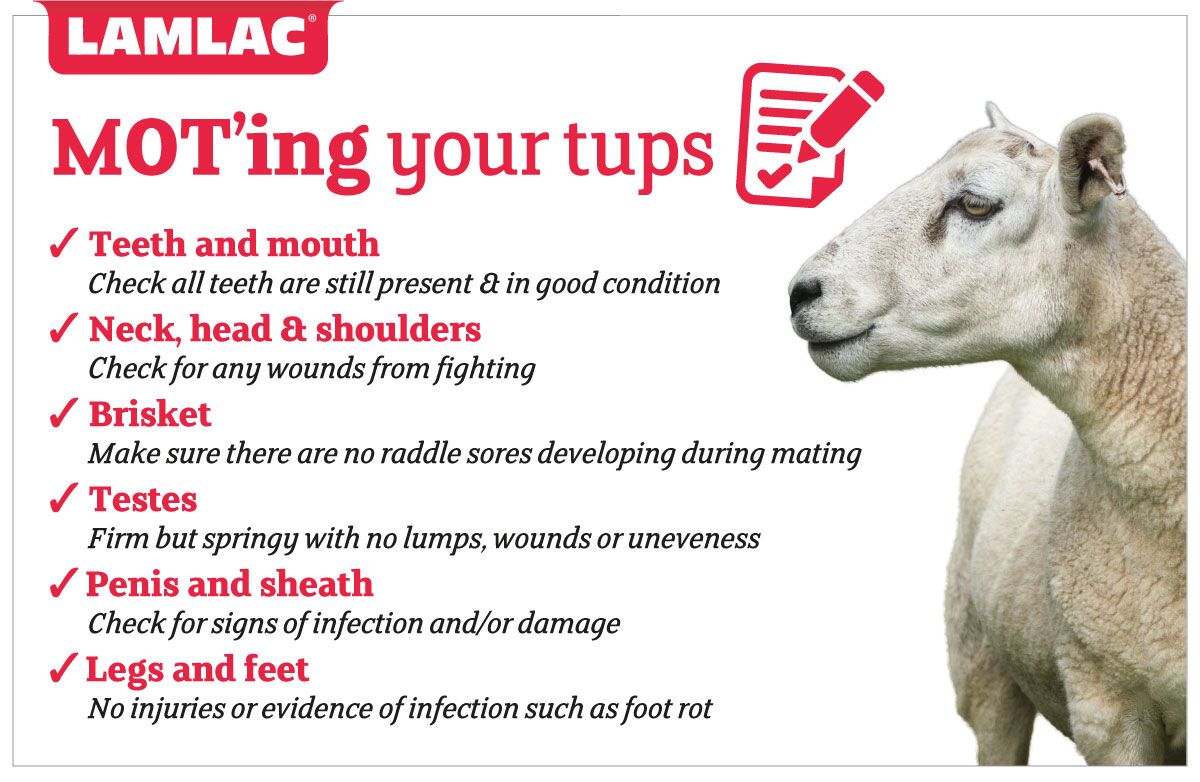Time to prime rams and ewes
The majority of sheep producers only get one chance each year to maximise lamb output, so it’s important to get it right. Ensuring ewes and rams are in the optimum condition for breeding is what sets the flock output for the following year, says Dr Liz Genever from AHDB Beef and Lamb.

MOT your ewes and rams
“For many flocks, now’s the time for ewe and ram MOTs,” she points out. “Rigorous ewe culling that ensures only sheep fit for breeding are kept is vital to flock profitability. No ewe should be retained if it is unlikely to rear lambs next season and bringing in better stock will raise flock performance.”
Dr Genever says that efficient culling will boost lamb output, reduce lambing problems, ensure 2018 lambs get enough milk from healthy ewes, and cut veterinary and medicine costs.
“You must make sure ewes are fit and able to conceive, remain pregnant and can rear their lambs. Cull any with poor teeth, as these sheep may not be able to eat enough to sustain a pregnancy, and take out any with mastitis or low, slack udders and damaged teats, as this will seriously affect their ability to fed and raise their lambs. Weed out also any that have had reproductive problems in the past, or any lame ewes.
”Most sheep breeds benefit from a flushing period for two to three weeks pre-tupping and Dr Genever points out that this is most effective when ewe body condition is on target. Boosting nutrition with forage and supplementary feed before breeding increases the ovulation rate in ewes and sperm production in rams. Improved nutrition is needed for at least one oestrus cycle (2-3 weeks) to influence the ovaries to release more eggs. Over-fat or thin ewes will be less fertile than those with a body condition score of 3.0, which is the optimum to aim for."
However, she urges producers not to flush on pastures containing red clover as these contain oestrogens that will affect ovulation rates.
Increasing ovulation rates
Putting a vasectomised (teaser) ram in with the ewes three weeks before breeding can also increase ovulation rates before the real tups go in. The more eggs that are released, the more likely ewes are to have twin lambs or more.
For rams, it is important to consider whether these are improving the genetic potential of the flock. “Unfortunately, you can’t judge the ultimate performance of a ram by looks alone; important meat production traits such as growth rate and muscle depth are not visible to the naked eye, ” Dr Genever says.“
Selecting rams with known EBVs
Buying or hiring a ram with known EBVs for growth rate can increase the weight gain of lambs that are produced and reduce the time it takes to reach slaughter weight, which in turn reduces the cost of production. And using a ram with high muscle depth EBV can enhance the carcass conformation of his lambs, which means they are more likely to meet market specifications, which has a major influence on the price received.
”Rams also benefit from a thorough MOT ten weeks before they start work and AHDB Beef & Lamb urges producers to concentrate on the four ‘Ts’– teeth, toes, tone and testicles.
Make sure you check the four T's
Teeth: Check teeth to ensure the ram can eat well enough to gain weight pre and post tupping
Toes: Trim feet if necessary and footbath to prevent or trea t problems. Check older rams for arthritis
Tone: Aim for a ram body condition score between 3.5 and 4.0 (1 is very thin and 5 very fat) as tupping starts. Good body condition is vital as rams can lose 15% of bodyweight during a six week tupping period
Testicles: Summer hot weather may have adversely affected sperm viability, so make sure rams are treated well now. Feed a high quality protein supplement for 6-8 weeks pre-tupping to improve testicle tone and boost semen production
Check out our top tips on MOT'ing your tups:
